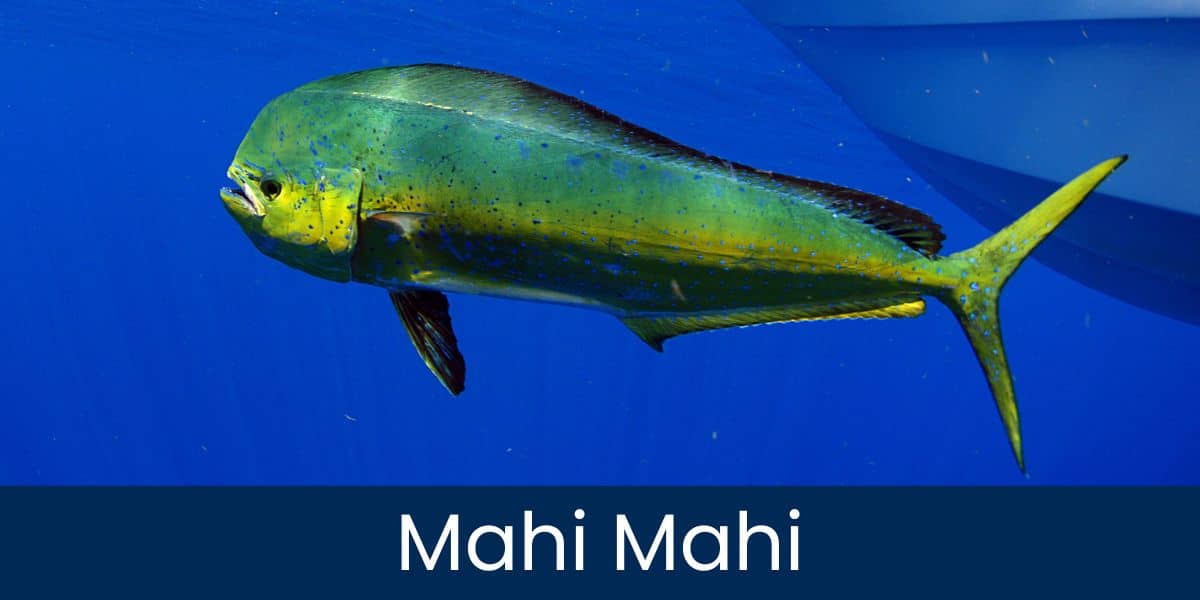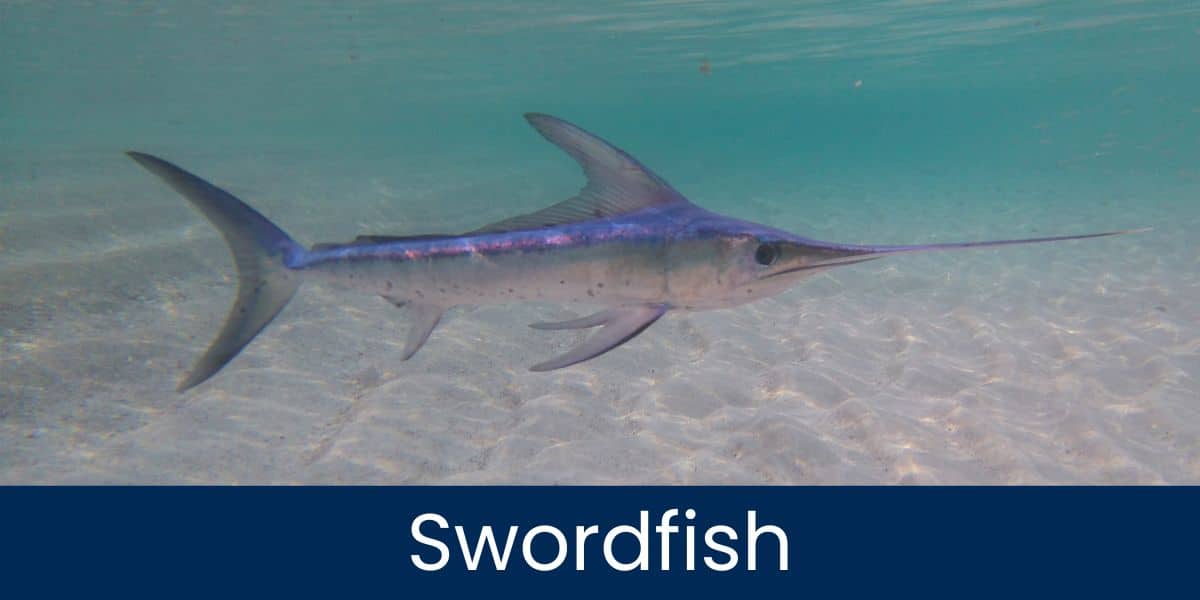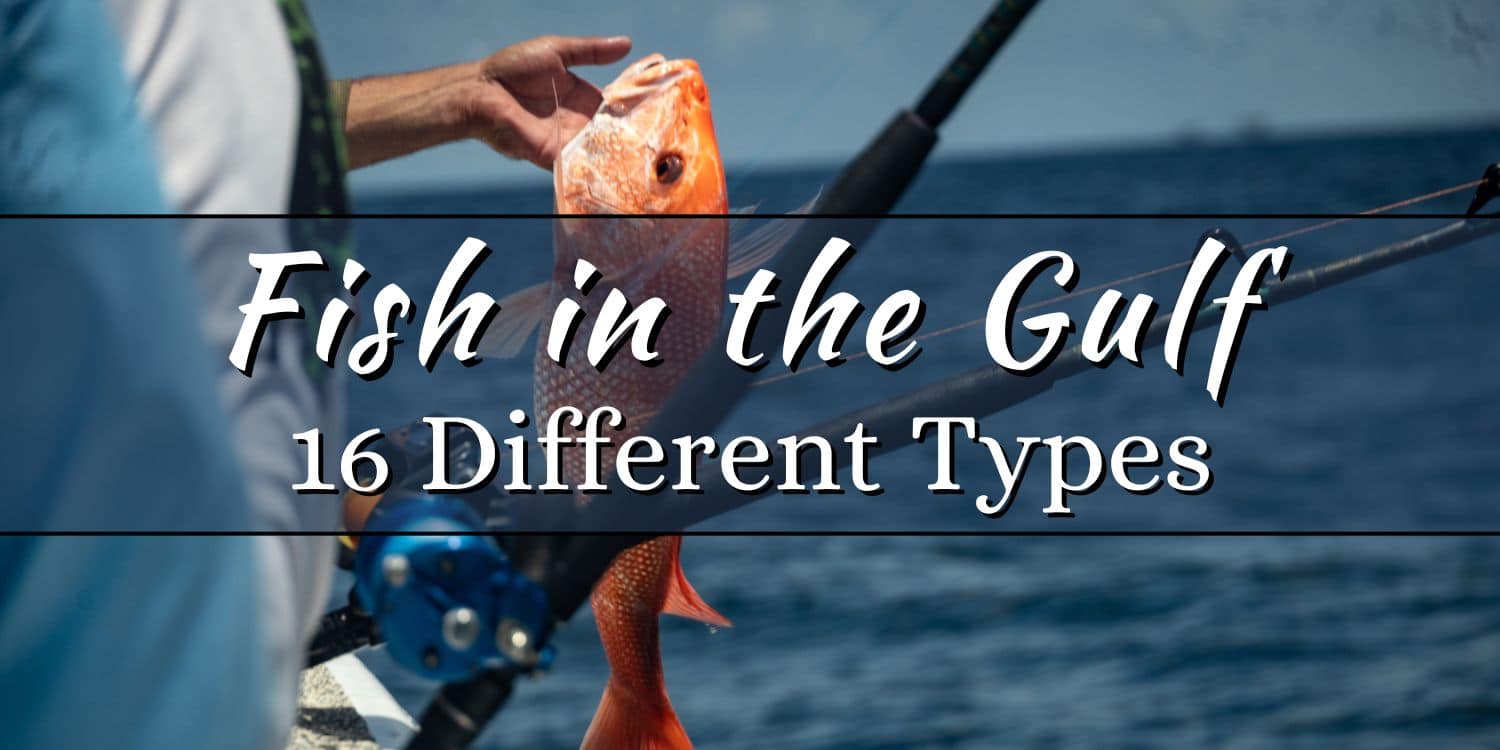The Gulf of Mexico is one of the world’s largest marine ecosystems, covering approximately 600,000 sq. miles. It also has one of its most diverse biomes. The warm waters of the Gulf, combined with diverse habitats that range from shallow coastal areas up to deep sea trenches create a haven where a wide variety of marine species can thrive.
The Gulf of Mexico is home to a wide variety of fish species. It’s an important ecosystem for marine biodiversity, and it’s also a popular spot for recreational and commercial fishing. The Gulf of Mexico is home to a variety of fish species, including the iconic blue marlin and the delicious red snapper. Anglers come from all over the world to catch these gamefish. This article will reveal the many types of fish that you can find around the Gulf.
1. Yellowfin Tuna
Yellowfin tuna, known for their streamlined bodies and bright yellow dorsal and anal fins, are among the most prized catches in the Gulf of Mexico. These powerful, fast-swimming fish are a favorite among sport fishermen due to their incredible strength and speed.
Habitat: Yellowfin tuna are pelagic fish, inhabiting the open ocean rather than coastal areas. They are commonly found in the deeper waters of the Gulf, often around offshore oil rigs, seamounts, and floating debris, which provide shelter and attract smaller fish, their primary prey. They can be found at depths ranging from the surface down to 500 feet or more.
Fishing Season: You can fish for Yellowfin Tuna year-round in the Gulf of Mexico, but the peak fishing season typically occurs from late spring to early fall. The best times to target yellowfin tuna are during the warm months when they migrate closer to the Gulf’s productive fishing grounds. Anglers often look for schools of baitfish or seabirds diving into the water, indicating the presence of tuna below.
2. Red Snapper
Red snapper is one of the most popular and iconic fish in the Gulf of Mexico, known for their vibrant red coloration and excellent table fare. These fish are a favorite among both recreational and commercial anglers.
Habitat: Red snappers inhabit the Gulf’s coastal waters and reefs, preferring rocky bottoms and artificial structures like oil rigs and shipwrecks. They are commonly found at depths ranging from 30 to 200 feet. Juvenile red snappers are often found in shallower waters, while adults tend to inhabit deeper areas.
Fishing Season: Red snapper season typically occurs during the summer months, with peak fishing opportunities from June to August. However, the specific season dates can vary based on state and federal regulations, which aim to manage the species’ population sustainably. Anglers targeting red snapper often use bottom-fishing techniques with live or cut bait near reefs and structures to attract these prized fish.
3. King Mackerel
The king mackerel is a sleek, elongated, silvery fish with a blue-green metallic back. The fish have dark spots on their sides, and a forked tail.
Habitat: King Mackerel are found in offshore waters including reefs and wrecks. They often migrate closer to the shoreline during migration.
Fishing Season: King mackerel can be caught all year round in the Gulf. However, peak fishing season varies by location. They are abundant in the northern Gulf from spring until fall.
4. Cobia
Cobias, also called lings or lemonfish, are distinguished by their elongated bodies, a large head, and a lower jaw that protrudes. The color of the fish is bronze to dark brown with a white belly.
Habitat: Cobias are highly migratory, and they can be found in many habitats including reefs, wrecks and offshore structures. They are commonly associated with large marine creatures like sharks and sea rays.
Fishing Season: Fishing for Cobia is typically done from early spring to early autumn, and the best fishing occurs during their migration period.
5. Greater Amberjack
The greater amberjack is a powerful, large fish with a streamlined head and a streamlined body. Silver with a bluish tint, they have dark bars on their sides.
Habitat: In the Gulf, greater amberjacks are often found around offshore wrecks, oil platforms, and reefs. They prefer deep waters between 60 and 240 feet.
Fishing Season: The fishing season for greater amberjack in the Gulf usually runs from early spring to late summer with the best fishing from April to June.
6. Tilefish
Tilefish, characterized by their vibrant colors and elongated bodies, are a unique and highly sought-after species in the Gulf of Mexico. Their firm, white flesh is prized by chefs and anglers alike, making them a popular target for recreational fishing.
Habitat: Tilefish inhabit deep, sandy, or muddy bottoms along the continental shelf and slope. They are commonly found at depths ranging from 200 to 900 feet. These fish create burrows in the sea floor, which they use for shelter. Tilefish are often associated with areas that have abundant benthic invertebrates, their primary food source.
Fishing Season: Tilefish can be caught year-round in the Gulf of Mexico, with peak fishing opportunities typically occurring in the spring and summer months. Due to their deep-water habitat, specialized gear and techniques are required to target tilefish effectively. Anglers often use deep-dropping methods with electric reels to reach the depths where tilefish reside.
7. Red Grouper
The red grouper is a robust fish, with a body that’s covered in irregular dark spots and small, dark spots. The fish have a large, rounded mouth.
Habitat: Red Grouper live on rocky bottoms and reefs. They also inhabit drop-offs, ledges and ledges. The depths of the fish can range from 30 to over 300 feet.
Fishing Season: Red grouper can be caught all year round in the Gulf. However, the best fishing is during the cooler months of fall and spring.

8. Mahi Mahi
Mahi Mahi, also known as dolphinfish, are renowned for their dazzling colors and acrobatic displays when hooked. These fast-growing and fast-swimming fish are a favorite among Gulf of Mexico anglers for both their sport and culinary value.
Habitat: Mahi Mahi are pelagic fish that inhabit the open ocean, often found near floating debris, sargassum weed lines, and offshore structures. They thrive in warm, tropical, and subtropical waters and are commonly found in the upper layers of the water column, ranging from the surface down to around 200 feet.
Fishing Season: Mahi Mahi can be caught year-round in the Gulf of Mexico, but the peak fishing season typically occurs from late spring to early fall. The best times to fish for Mahi Mahi are during the warmer months when they migrate closer to the Gulf’s offshore waters. Anglers often look for floating debris or weed lines, as these structures provide shelter and attract the small fish and invertebrates that Mahi Mahi feed on.
9. Spanish Mackerel
The Spanish mackerel is a slender, silvery fish with an iridescent back and sides. It also has yellow spots on its sides. The tail is forked and they have many finlets.
Habitat: Spanish mackerel is a pelagic fish that can be found in the nearshore waters of bays, estuaries and beaches. Also, they are often found around oil rigs and reefs.
Fishing Season: Spanish mackerel can be caught all year round in the Gulf. However, peak fishing season varies by location. They are abundant in the northern Gulf from spring until fall.
10. Wahoo
The sleek and elongated Wahoo has a blue-green metallic back with silver sides. The fish have vertical blue stripes along their sides, and a pointed nose.
Habitat: Wahoos are pelagic fish that live in the ocean, around reefs, along weedlines, and on current edges. The fish are usually found in depths between 100 and 500 feet.
Fishing Season: The best time to catch Wahoo in the Gulf is from late winter through early spring.
11. Gag Grouper
The body of a gag grouper is robust, with a concave tail and a tapered nose. The coloration of the fish is usually grayish-gray with darker markings and blotches scattered over their body. They may have darker fins and a distinct dark, blotchy design around their mouth. Adult gag groupers can reach lengths up to three feet and weigh more than 50 pounds.
Habitat: Gag Grouper can be found in many different depths, including the Gulf of Mexico as well as along the southeast coast of the United States. Gag grouper can be found as shallow as 20 feet around structures such as reefs and ledges. They also inhabit deeper water, from 60 feet up to 500 feet.
Fishing Season: In the Gulf of Mexico, the best time to catch gag groups is in the spring and autumn when the water temperature is moderate and the fish more active. You can increase your odds of success by targeting them near structures such as reefs and ledges during periods of moderate tide movement.
12. Crevalle Jack
The Crevalle Jack, also called the Common Jack or Yellow jack, is a powerful fish that has a deep body with a compressed shape and a steeply angled forehead. The fish are silvery-bronze in color with a black spot on the gill covers.
Habitat: Crevalle Jacks are found in many habitats including bays, estuaries and offshore reefs. These fish are usually found in groups near structures or along the coast.
Fishing Season: The best time to catch crevalle jack is during the migration period.

13. Swordfish
Swordfish, distinguished by their long, flat bill, are one of the most formidable and sought-after game fish in the Gulf of Mexico. Known for their strength and agility, they provide an exciting challenge for anglers.
Habitat: Swordfish are deep-water pelagic fish, often inhabiting the open ocean’s middle and lower depths. They are commonly found at depths ranging from 1,200 to 1,800 feet during the day, but they move closer to the surface at night to feed. Swordfish are frequently located near underwater canyons, seamounts, and other deep-sea structures that attract their prey.
Fishing Season: Fishing for Swordfish can be done year-round in the Gulf of Mexico, with peak fishing opportunities typically occurring from late spring to early fall. The best time to target swordfish is during the nighttime, as they ascend to shallower depths to hunt. Anglers often use deep-dropping techniques with heavy tackle and squid or other large baits to attract these elusive predators. Night fishing trips, equipped with specialized lighting to attract baitfish, are particularly effective for swordfishing in the Gulf.
14. Flounder
Flatfishes with brown mottled coloration and both eyes on the same side of their heads are called flounders. They provide excellent camouflage to help them blend in on the seafloor.
Habitat: Flounders are found in the shallow waters of estuaries and bays, as well as coastal waters. They are commonly found near structures like jetties and docks.
Fishing Season: In the Gulf of Mexico, flounder is commonly caught year-round. The best fishing spots vary by species and location.
15. Tarpon
Tarpons are silvery, large fish with long bodies and forked tails. They also have large mouths. The fish have distinctive horizontal stripes on their sides, and a prominent lower mouth.
Habitat: Tarpons are highly migrating and can be found throughout a wide range of habitats including coastal waters and estuaries. They also live along beaches and on the coast. They are usually found near channels and passes.
Fishing Season: Tarpon fishing season is usually from early spring to late summer, with the best fishing from May to August.
16. Triggerfish
Triggerfish is a small to medium sized fish, with a lateralized body, large heads and recognizable spines on the dorsal fin.
Habitat: Triggerfish live on rocky bottoms and reefs in the Gulf of Mexico. They are usually found in shallow coastal water ranging between 20 and 150 feet.
Fishing Season: In the Gulf, triggerfish are typically caught year-round. The best fishing conditions vary by location and regulations.
Make the Gulf of Mexico your next fishing adventure
Louisiana Offshore Fishing Charters offers guided fishing trips that are tailored to your needs. Whether you want to catch red snapper off-shore, chase king mackerel along the coast or fight trophy tarpons in the shallows.
Louisiana Offshore Fishing Charters offers Gulf fishing trips with experienced captains that know the waters of the Gulf like the backs of their hands. They also have top-notch fishing equipment and are committed to providing an unforgettable experience. Book your next Gulf of Mexico fishing trip today.




